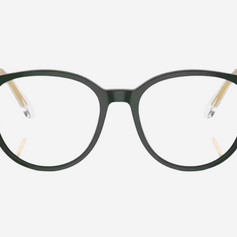Presbyopia
The word “Presbyopia” comes from a Greek word which means ‘old eye’. Simply speaking presbyopia means farsightedness caused by loss of elasticity of the lens of the eye, which normally occurs with age. You may notice the signs of presbyopia sometime after the age of 40. You may find that you need to hold reading material farther away in order to see it clearly.
Cause
The clear lens in your eye sits behind the colored Iris. It changes its shape to focus light onto the retina so we can see. When we are young, the lens is soft and flexible, and can easily change shape. Which helps you focus on things that are far-away or sitting close. As we age, the lens becomes hard and cannot change shape easily. The accommodative ability decreases with the hardening of the lens and the loss of the strength of the ciliary muscles. Due to which it gets difficult to do any close-up tasks like reading or threading a needle.
Presbyopia is a normal aging process and there’s no way to escape through this process.
Presbyopia often becomes a substantial and emotional event because it’s a sign of aging, and you cannot deny the fact and it’s difficult to hide.
Symptoms
Initially, you might have problem seeing the menu in dimly lit restaurants. Presbyopics may increase lighting to see clearly. Light adds contrast and constricts the pupil. In presbyopia, you may have to hold objects further away from your eyes at arm’s length to see them more clearly. Some of the eyecare professionals also call this a ‘long arm syndrome’. Unfortunately, when you move things farther from your eyes, they get smaller in size and it becomes uncomfortable.
Other symptoms may include headaches, eye fatigue with reading, grittiness of the eyes with prolonged close work, and trouble with threading a needle.
Treatment
Presbyopia can be treated with eyeglasses, contact lenses and vision surgery.
Different types of eyeglass lenses are available for the treatment of presbyopia: the reading glass, bifocal, trifocal and progressive. Most of the presbyopes are more receptive towards the reading glasses. If the patient's distance vision is good than usually, doctors prescribe only reading glasses. However, you should keep in mind that the reading glasses can strictly be used for reading or close-up work. They will blur things if they are used for distance work.
Bifocal is another kind of lens that can be used as a treatment option for presbyopia. Bifocals are the ones with a visible horizontal line in the middle of the lens. The area of the lens above the line is used for distance vision. The area below the line is equipped with the reading prescription which will allow you to read and do close-up work effectively. Bifocals range of vision is limited for so many people with presbyopia.
Progressive lenses are the most preferred lenses for the presbyopes. There’s no visible line across the lens and this is the reason, they are also called no-line multifocal lenses. They provide clear and excellent vision at all distances.
However, not everyone who is 45 or older needs reading glasses. Myopic people do not need reading glasses, because they can simply take off their glasses to read. People who are near-sighted in one eye, they won’t even realize this difference and may live happily without a reading aid indefinitely. On top of everything, the needs of every person differs. Every person uses their eyes in different ways, and everyone’s optical needs are different.















